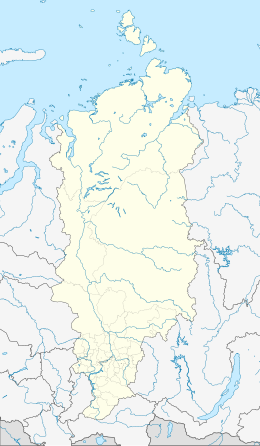|
Komsomolets Island
 Komsomolets Island (Russian: остров Комсомолец) is the northernmost island of the Severnaya Zemlya group in the Russian Arctic, and the third largest island in the group. It is the 82nd largest island on earth. About 65% of the island is covered with glaciers, including Russia's largest, the Academy of Sciences Glacier. GeographyKomsomolets Island is separated from October Revolution Island in the south by the Red Army Strait and from Pioneer Island in the southwest by the Yuny Strait.[1] The northernmost point of the island is the Arctic Cape, the launching point for many Arctic expeditions. Practically the whole of the central and southern part of the island is covered by the massive Academy of Sciences Glacier, between Krenkel Bay in the east and Zhuravlev Bay in the west.[2] The northern part is largely unglaciated. The area of this island has been estimated at 9,006 km2. It rises to a height of 780 m. Komsomolets Island is home to the largest ice cap in Russia, the Academy of Sciences Ice Cap.[3] GeologyThe soil of the island is mostly composed of loose loam and sands, a tundra desert scattered with mosses and lichens.[4] HistoryThe island was discovered by Boris Vilkitsky in 1913, but it was not proven to be an island until 1931, when Georgy Ushakov and Nikolay Urvantsev charted the archipelago during their 1930–32 expedition.[5] They also named it. In keeping with their tradition of naming the islands after events and movements of the Russian Revolution, this island was named in honour of the members of the Komsomol, the "Communist Union of Youth." Photo gallery
References
External links
|
||||||||||||||||||||||||
Portal di Ensiklopedia Dunia










